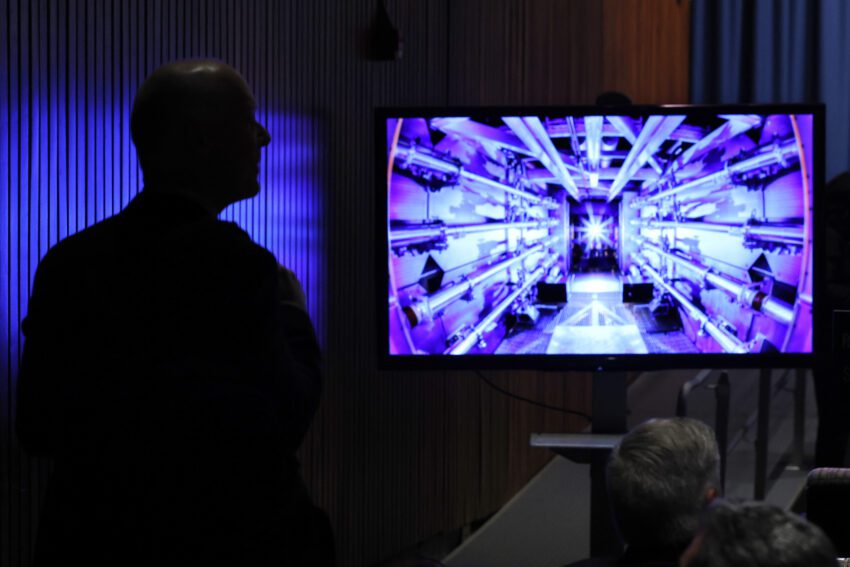
the us has a new roadmap for The U.S. Department of Energy has unveiled a new roadmap aimed at realizing the long-held ambition of harnessing fusion energy, although it currently lacks the necessary funding to implement its ambitious plans.
the us has a new roadmap for
Overview of the New Roadmap
On December 13, 2022, during a press conference at the Department of Energy headquarters in Washington, D.C., officials announced a significant breakthrough in fusion research. This announcement coincided with the achievement of “ignition” at the National Ignition Facility at Lawrence Livermore National Laboratory (LLNL), a milestone in fusion energy development. Following this, the DOE released a roadmap outlining its strategy to support research and development efforts and foster public-private partnerships aimed at constructing the first generation of fusion power plants.
The roadmap emphasizes the potential of artificial intelligence (AI) as both a catalyst for breakthroughs in fusion technology and a response to the increasing electricity demands of data centers. The DOE’s ambitious timeline aims for commercial-scale fusion power to be integrated into electricity grids by the mid-2030s. However, the specifics of how to achieve this remain unclear, especially given that success hinges on scientific breakthroughs that have eluded researchers for nearly a century.
Challenges Ahead
The roadmap presents a vision for the future of fusion energy, yet it is fraught with challenges and uncertainties. The goal is to create a public infrastructure that supports the scaling up of the fusion private sector in the 2030s. However, many hurdles remain, and the prospect of powering homes and businesses with fusion energy may still be decades away, if it is achievable at all.
Understanding Fusion Energy
The fundamental difference between nuclear fission and fusion is crucial to understanding the challenges involved. Current nuclear fission plants operate by splitting atoms to release energy, while fusion plants would generate energy by fusing atoms together in a controlled manner. When this process occurs uncontrollably, as in a hydrogen bomb, it leads to catastrophic results. The potential benefits of fusion energy are significant: it produces minimal radioactive waste compared to fission and does not rely on fossil fuels, making it a cleaner alternative.
Fusion mimics the natural processes that power stars, generating light and heat through the fusion of hydrogen atoms. However, achieving a controlled fusion reaction requires immense heat and pressure, making it a daunting task. The scientific community has long sought to achieve a net energy gain from fusion reactions, a milestone referred to as “ignition.” In 2022, researchers at LLNL successfully achieved this for the first time using advanced laser technology, marking a pivotal moment in fusion research. The challenge now lies in sustaining this reaction for longer periods and scaling it for practical energy production.
The Role of AI in Fusion Development
The recent surge in interest surrounding fusion energy can be attributed to several factors, including the rapid growth of generative AI technologies. Major tech companies are racing to secure sufficient electricity to power their expanding data centers. High-profile investors like Sam Altman, Bill Gates, and Jeff Bezos have backed fusion startups that are developing innovative plant designs. Notably, both Google and Microsoft have announced intentions to purchase electricity from upcoming fusion power plants, which are expected to be operational by the late 2020s or early 2030s. The DOE reports that over $9 billion in private investments have been funneled into fusion demonstrations and prototype reactors, highlighting the growing interest in this field.
Infrastructure and Collaboration
The DOE’s roadmap outlines several critical areas where it aims to facilitate progress in fusion energy. One of the primary objectives is to bridge the gap between public and private sectors to develop the essential infrastructure needed for commercial viability. This includes the production and recycling of fusion fuels, primarily hydrogen isotopes known as tritium and deuterium. Additionally, the roadmap identifies the need for structural materials capable of withstanding the extreme conditions present in fusion reactors, akin to those found within stars.
Another key aspect of the roadmap is the establishment of regional hubs for fusion innovation. These hubs would foster collaboration among DOE laboratories, universities, local and state governments, and private companies to build a skilled workforce capable of advancing fusion technologies. One notable collaboration involves Nvidia, IBM, and the Princeton Plasma Physics Laboratory, working alongside the DOE to create an AI-optimized fusion-centric supercomputing cluster named Stellar-AI. This initiative aims to leverage AI’s capabilities to accelerate research and development in fusion energy.
Funding Challenges and Political Context
Despite the ambitious goals outlined in the roadmap, a significant disclaimer accompanies the document. It explicitly states that the DOE is not committing to specific funding levels and that future funding will depend on Congressional appropriations. This lack of guaranteed funding raises questions about the feasibility of the proposed initiatives and the timeline for achieving commercial fusion energy.
The political landscape surrounding energy policy in the United States adds another layer of complexity. The Trump administration’s energy strategy has sought to consolidate fossil fuels, nuclear fission, and fusion under the banner of “energy dominance.” However, this approach has also involved cuts to funding for renewable energy sources like solar and wind, which are generally faster and more cost-effective to deploy in meeting the nation’s growing electricity demands. Critics argue that this focus on traditional energy sources may hinder the progress of emerging technologies like fusion, which require substantial investment and long-term commitment.
Stakeholder Reactions
The response from various stakeholders to the DOE’s roadmap has been mixed. Proponents of fusion energy view the roadmap as a crucial step toward realizing the potential of this clean energy source. They argue that the integration of AI and the establishment of public-private partnerships are essential for overcoming the technical challenges that have historically plagued fusion research.
Conversely, skeptics point to the roadmap’s vague details and the absence of guaranteed funding as significant obstacles. They emphasize the need for a more concrete plan that outlines specific milestones and funding commitments to ensure the successful development of fusion energy. Additionally, some experts caution that the timeline for achieving commercial fusion power may be overly optimistic, given the historical difficulties associated with this technology.
Conclusion
The DOE’s new roadmap for fusion energy represents a bold vision for the future of clean energy in the United States. While the potential benefits of fusion are significant, the challenges ahead are equally daunting. Achieving commercial-scale fusion power by the mid-2030s will require not only scientific breakthroughs but also substantial investment and collaboration among various stakeholders. As the world grapples with the urgent need for sustainable energy solutions, the success of this roadmap will depend on the commitment of both public and private sectors to turn the dream of fusion energy into a reality.
Source: Original report
Was this helpful?
Last Modified: October 18, 2025 at 3:36 am
2 views















